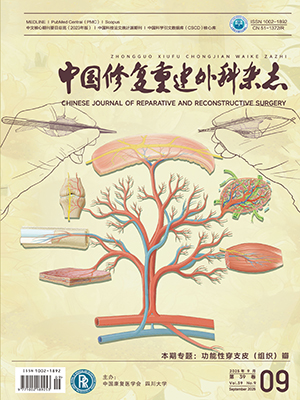Objective To explore the choice for the internal fixation in treatment of pelvic posterior lesions. Methods From May 2000 to June 2005, the treatment was given to 40 patients (28 males, 12 females,aged 21-58 years) with pelvic posterior ring fracture and dislocation. Of the patients, 23 had a traffic accident, 11 had a crush injury and 6 had a fall. As for the state of an injury to the pelvic posterior ring, 22 patients had disloation of the sacroiliac joint, 12 had a sacrum fracture dislocation, and 6 had an ala iliac fracture and disloation of the sacroiliac joint. According to the Denis(1988) classification, fracture of the (sacral region Ⅰ was found in 6 cases, fracture of the scaral) region Ⅱ in 3 cases, and fracture of the scaral region Ⅲ in 3 cases. As for the complication of the pelvic front ring fracture:separation of the symphysis pubis was found in 14 cases, fraclure of the superior ramus and inferior ramus of the pubis on one side in 10 cases. The two-side superior ramus of publis and inferion ramus of pubisin 8 cases, homopleural acetabular fracture on one side in 4 cases, acetabularfracture on one side and contralateral superior ramus and inferior ramus fracture of the pubis in 3 cases, and acetabular fracture on the opposite side in 1 case.As for the operation, 28 patients underwent the stillplate internal fixation of the sacroiliac joint from anterior at 24 h to 15 days after the injury, 2 underwent the screwinternal fixation of the sacroiliac joint from posterior, and remaining 10 underwent the internal fixation by the Galveston Technique associated with the ISOLAsystem. The therapeutic results were analyzed. Results The followup of the 40 patients for 6 months to 3 years revealed that before operation 3 had a sacral plexus nerve injury, and after operation 1 patient developed perineum numbness and urinary incontinence, 1 developed claudication,3 developed posterior urethral fragmentation, and 2 developed urinary bladderrupture; however, they had a complete recovery after the reparative surgery. Conclusion In treatment of the pelvic posterior ring lesions,an appropriate internal fixation can be chosen according to the type of the pelvic fracture,applicability of internal fixation, condition of the patient,equipment available, and the doctor’s experience.
Citation: ZHANG Qianfa,PANG Qingjiang,GE Zhibin,et al.. INTERNAL FIXATION FOR PELVIC POSTERIOR RING LESIONS. Chinese Journal of Reparative and Reconstructive Surgery, 2006, 20(12): 1214-1216. doi: Copy
Copyright © the editorial department of Chinese Journal of Reparative and Reconstructive Surgery of West China Medical Publisher. All rights reserved




